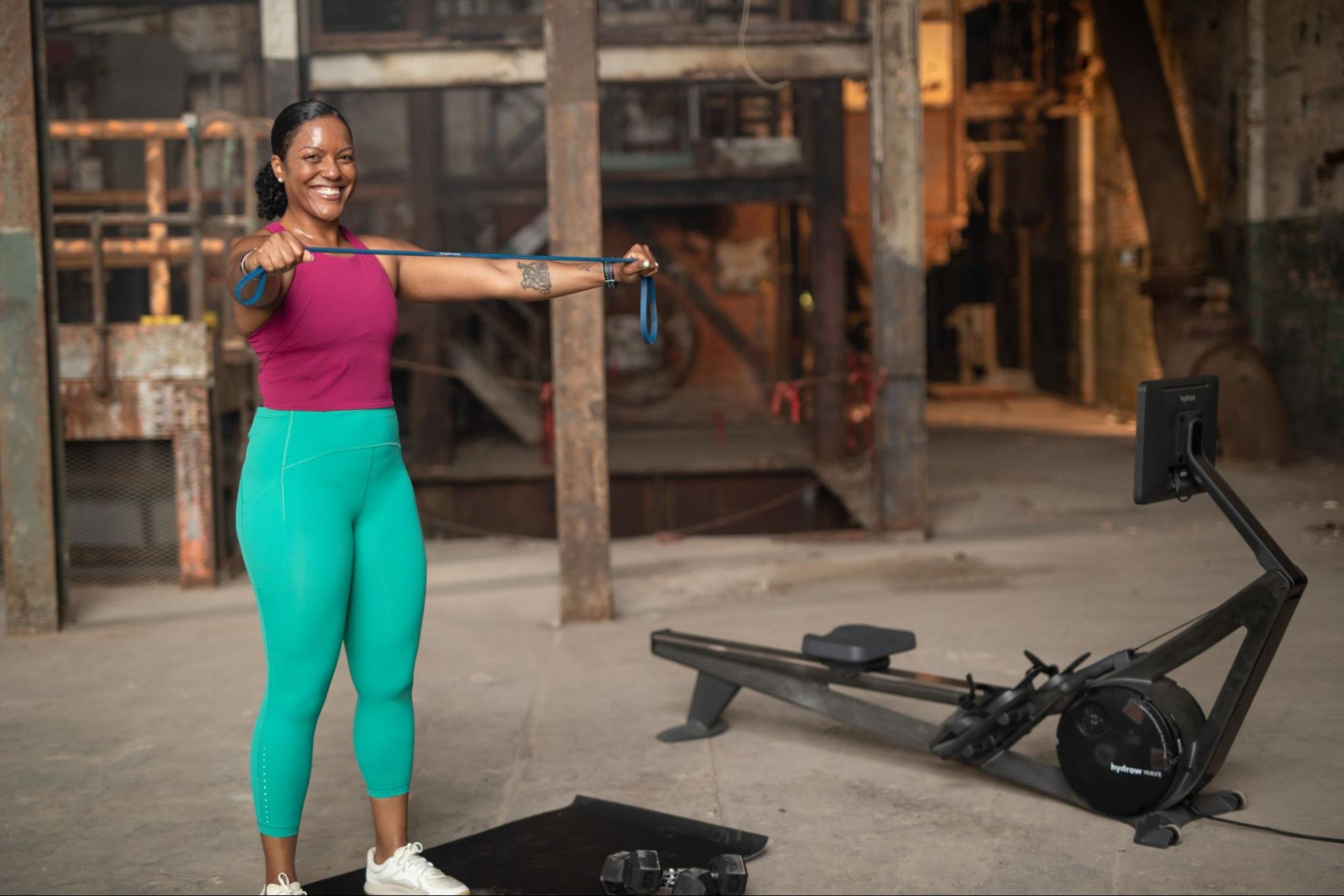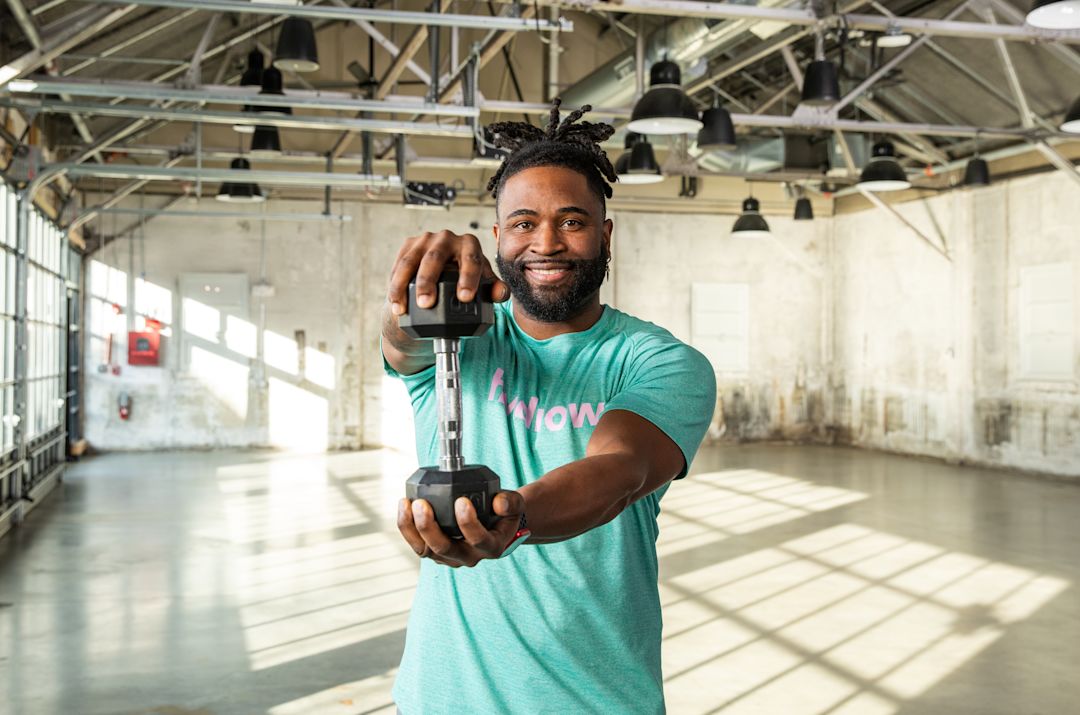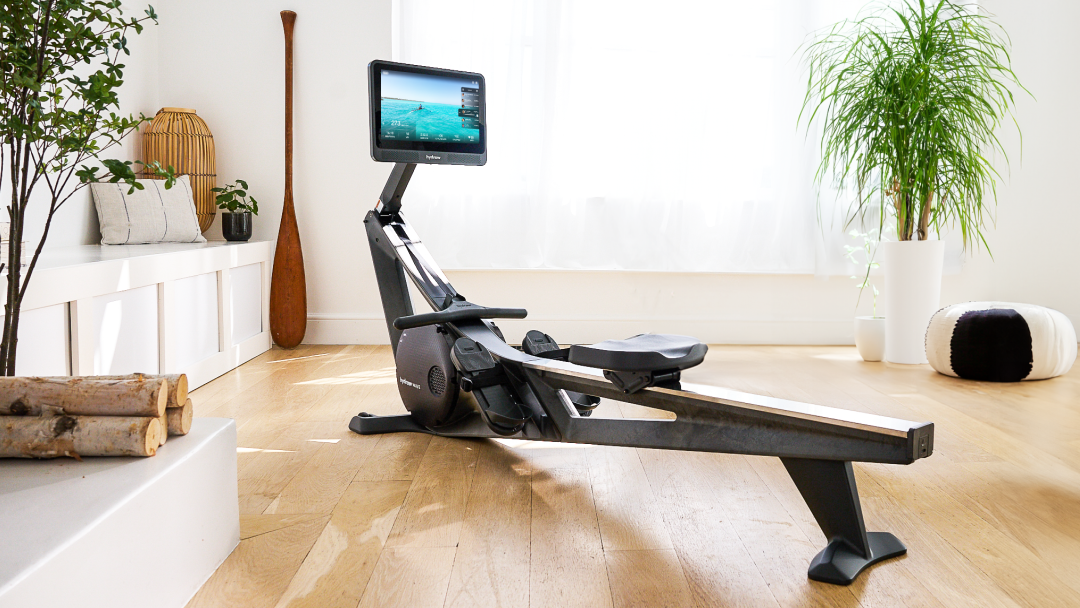How to Use Resistance Bands for Strength and Mobility Training

Resistance bands have become an essential tool in fitness, offering a simple yet highly effective way to build strength and improve mobility. Their affordability, portability, and versatility make them a great alternative to free weights and machines, whether you’re working out at home, in the gym, or on the go.
With the right techniques, resistance bands can help you enhance your strength training, improve your flexibility, and support recovery. In this blog, we’ll explore the different types of resistance bands and how to use them for strength and mobility training. Check out the following topics:
Let’s jump in!
What are resistance bands?
Resistance bands are stretchable bands made of rubber or latex that provide resistance when stretched. Originally used for physical therapy and rehabilitation, they have gained more popularity in strength and condition training lately.
Resistance bands come in many shapes, sizes, and resistance levels, allowing users to progressively challenge their muscles and improve mobility with minimal equipment.

Explore Hydrow's library of strength training workouts.
The benefits of resistance bands for strength and mobility training
Resistance bands offer numerous advantages, making them an excellent tool to incorporate into any workout routine. Consider the following benefits:
Affordability
Portability
Versatility
Variable resistance
Joint friendly
1. Affordability
Resistance bands are a cost-effective alternative to traditional weights and machines. They are a fraction of the cost of dumbbells or kettlebells but still provide the resistance required to build muscle during strength training.
2. Portability
The lightweight and compact nature of resistance bands makes them easy to carry around with you in a bag or purse. They’re perfect for home workouts or continuing your workout routine while you travel.
3. Versatility
Resistance band exercises are highly versatile across strength training, stretching, rehabilitation, and even high-intensity workouts. You can increase the resistance or your own intensity to maximize your efforts or scale back if recovering from an injury.
4. Variable resistance
Resistance bands provide constant tension throughout the movement, improving muscle activation. They can help increase your mind-muscle connection for increased gains during strength training. Moreover, you can select from a variety of weight resistance, much like free weights.
5. Joint-friendly
Resistance bands reduce strain on the joints, making them ideal for rehabilitation and injury prevention. They are great for those who are new to strength training or those with limited mobility.
Different types of resistance bands and their uses
When choosing to incorporate resistance bands into your exercise routine, there are a number of different options you can select. Look out for the following types:
Loop bands: Loop bands are continuous loops that are great for lower-body exercises like squats, glute bridges, and lateral walks. They are also available in a variety of sizes.
Tube bands with handles: These bands come with grips that are ideal for upper-body exercises like rows, presses, and bicep curls. Then can also be anchored around a stable object like a support pole in your home or a pull-up bar.
Flat therapy bands: These are used primarily for physical therapy and rehabilitation exercises. They can help with gentle stretching and mobility work, as their flexibility allows you to increase resistance by stretching the material.
Figure-eight bands: Shaped like an 8 with handles, these bands are great for targeted upper-body resistance training.
Pull-up assist bands: These are heavy-duty bands designed to support bodyweight exercises like pull-ups and dips. They are excellent for modifying a traditional pull-up or dip.
How to use resistance bands for strength training
Resistance bands can complement traditional strength training by providing variable resistance. Here’s a few ways to maximize their effectiveness:
1. Anchor the band securely
Some bands will need to be anchored to a sturdy object like a door or a railing in order to perform some of the exercises safely and effectively.
2. Adjust resistance levels
Shortening the band will increase resistance, while lengthening it will reduce it. Moreover, some bands are rated at certain weight levels, so you can gauge how many pounds or kilograms you’re resisting with each exercise. Try a variety of resistance levels with the goal of increasing over time in order to strengthen your muscles.

Explore Hydrow’s library of 5,000+ rowing, circuit training, yoga, Pilates, and mobility workouts.
3. Control your tempo
Slowing down movements increases time under tension. As a result, your muscles will grow stronger due to longer, more sustained muscle engagement.
4. Combine with other equipment
Use resistance bands with dumbbells or barbells to add dynamic tension and increase difficulty. For example, wrapping a resistance band behind your back and gripping the ends around a barbell while performing a chest press will help increase intensity during the exercise.
How to use resistance bands for mobility training
Mobility exercises with resistance bands can help improve flexibility, range of motion, and injury prevention. Some key applications include:
Stretching: Bands assist in deepening stretches by providing gentle resistance. For example, using a band around your foot while lying down can enhance a hamstring stretch, leading to greater mobility over time.
Joint mobilization: Resistance bands can help move joints through their full range of motion, aiding in improved movement patterns. As a result, you will likely have more successful strength training sessions and better recovery, as your joints’ flexibility will have improved.
Rehabilitation exercises: Bands are commonly used in physical therapy to support recovery from injuries, especially in the shoulders, knees, and hips. You can perform these exercises at home or under the guidance of your physical trainer or physical therapist.
Common mistakes to avoid when using resistance bands
While resistance bands are highly effective, improper use can lead to reduced effectiveness or even injury. Avoid these common mistakes:
1. Choosing the wrong resistance level
Using a band that’s too light won’t challenge your muscles, while one that’s too heavy may cause poor form. Think Goldilocks here! Start where you’re comfortable and increase intensity over time.
2. Not securing the band properly
Bands that aren’t anchored well can snap back, potentially causing injury. Always be sure your band is anchored to a sturdy object or surface before beginning your exercise. Moreover, avoid performing any exercises with sweaty hands, as you can easily lose your grip on the band. Keep a towel nearby to dry your hands between sets.
3. Ignoring tempo or control
Rapid movements reduce effectiveness. Slow, controlled motions are key to proper engagement. They’ll also help you avoid injury and maintain proper form.
4. Overstretching the band
Pulling a band beyond its capacity can weaken it over time and cause it to snap. If you notice a band has become worn out, it’s time to replace it. Do not use a worn-out band, as it can break and lead to an injury.
Tips for incorporating resistance bands into your workouts
To make the most of our your resistance bands, consider the following tips:
1. Warm up with bands
Use light resistance bands for dynamic warm-ups, such as pull-aparts or shoulder mobility. Save the more intense bands for the bulk of your workout routine.
2. Progressive overload
Increase band resistance over time to challenge your muscles. Your muscles will only grow if you continue to make them work. Increase the resistance or choose a heavier-weighted band as you continue your exercise routine over time.

Did you know?
Over 90% of Hydrow members are still active one year later.
3. Mix them with other equipment
Combine bands with weights for added tension and muscle activation. For example, consider using a band while completing overhead presses by standing on a band and holding it in your hands with dumbbells or kettlebells for added resistance.
4. Follow structured workouts
Incorporate resistance bands into strength and mobility workouts using guided training programs. Hydrow has a number of excellent strength and workout routines you can access with a Hydrow membership.
Let’s wrap it up!
Resistance bands are a powerful tool for both strength and mobility training, offering an affordable, versatile, and joint-friendly way to improve fitness. Whether you’re using them to build muscle, enhance flexibility, or support recovery, resistance bands can easily be incorporated into your workout routine.
Looking for a great set of resistance bands to get you started? Hydrow’s Multi-Resistance Band Kit offers two short resistance bands, two long resistance bands, and three resistance bands with different levels of resistance so you can tailor your workout to your fitness level and goals. Learn more about our resistance bands today!
And, you’re looking for other ways to develop your functional strength, consider investing in a Hydrow rowing machine. These indoor rowers offer a total-body workout, targeting 86% of your muscles in each rowing stroke On top of offering incredible rowing workouts, Hydrow rowing machines also offer an extensive library of workout content such as strength training, Pilates, yoga, and circuit training workouts.
Learn more about the benefits of rowing and a Hydrow rowing machine today!

Real strength keeps moving
Learn how working out with Hydrow can help support a fuller, more active life.











